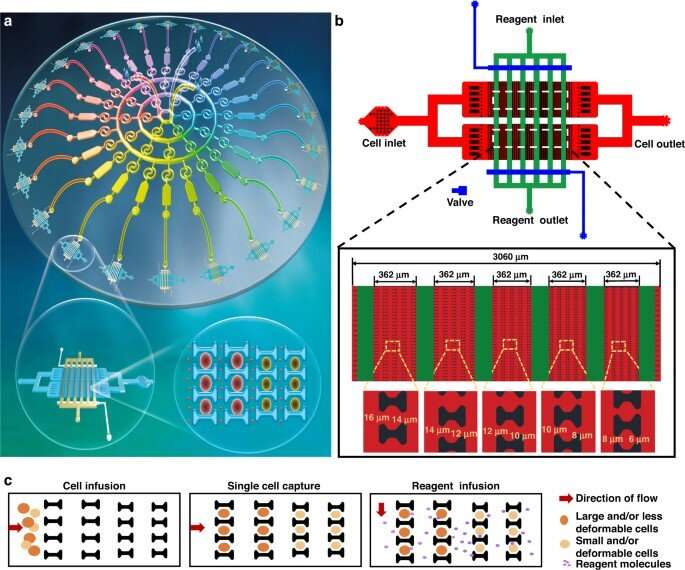
The potential to isolate and regulate the biodynamics of single cells is significant in drug design and screening. However, pre-existing experimental reports in single-cell drug screening must yet provide multiple-dose gradient studies, to accurately predict drug–single cell interactions and performance. In a new report in Microsystems and Nanoengineering, Shaofei Shen and a team of scientists in life sciences and medicine in China solved this problem by creating a multi-concentration gradient generator.
They combined the gradient generator with a single-cell capture array, to understand the impact of single or combined doses of 5-fluoro uracil and cisplatin anticancer drugs on human hepatoma cells and human breast cancer cells, at the single-cell level. The instrument provided a simple and reliable platform to study the correct dosage of different drug candidates at the single cell level to screen single-agent chemotherapy agents and efficiently form combinatorial therapy regimes.
Drug screening methods offer a visible solution to prevent infections and treat human disease. Broad research efforts have shown that microfluidic chip technology offers a microanalysis platform for easy access and biocompatibility. Most microfluidic systems offer a powerful instrument to study cell populations at the level of single cells, while facilitating dose-dependent cellular responses at different drug concentrations. In this work, Shen and colleagues optimized a multistage microfluidic device combined with a single-cell capture array to generate a single-cell microfluidic drug screening platform across multiple drug doses.
In this work, the researchers calculated the concentration gradient generated in theory, and verified it in a fluorescent experiment. They used cisplatin and 5-fluorouracil; two chemotherapeutic agents as model drugs for single or multidrug combinatorial chemotherapy on human breast cell carcinoma cells and human hepatoma cells at the single-cell level. The system provided a flexible and well-regulated instrument to study pharmacological functions and conduct single-cell research.
Shen and the team designed and constructed the microfluidic platform containing 24 single-cell capture devices. They generated a series of successful drug concentration gradients in the device, where the concentration-gradient generator could jointly screen two drugs, allowing them to study a single drug and multidrug combinations alongside their optimal dosage.
2023-05-02 02:00:04
Original from phys.org
